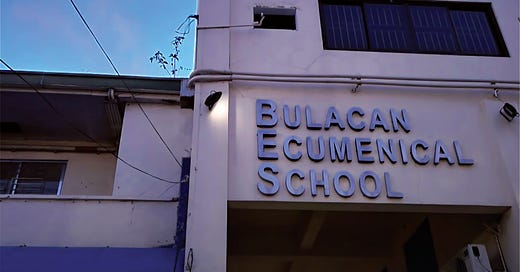Hybrid FlexiLead, transition to face-to-face ‘not easy’ - Diaz
The academic division head sits down in a special interview to discuss the challenges of opening the campus gates to hundreds of students once more.
In an exclusive interview, Yolanda Diaz remarks that the transition to face-to-face was “not easy”, discussing the challenges of implementing the Hybrid FlexiLead system.
The academic division head says that the transition was not easy because of the need “to reprogram the class program, the teacher’s load, and the adjustment of the required competencies.”
“We have to make it ready to accommodate the learners in proper distances whenever they have to come here for the face-to-face session,” Diaz said.
The school was fearful initially about how they will manage and operate the Hybrid FlexiLead rotation model, according to Diaz.
“For the first time, we will implement in our school that rotation model of Hybrid FlexiLead, combination of face-to-face, full online, synchronous, asynchronous, [...] we have also to prepare & adjust with the necessary technology on how to serve it,” she added.
Diaz mentions that one of the biggest challenges was preparing the school facilities to accommodate the “ideal number of learners”.
The school needed to repair damages to the buildings and the air conditioning units, she says.
“There are some rooms that were damaged by the three years vacancy, there wasn’t any class using that room so it was found to have damage,” she noted.
Diaz adds that the school is ready to implement the original curriculum if the department gives the signal to do so.
“If the Department of Education would instruct and give us the rule to get back into the original list of the competencies to be delivered, the teachers are ready, and the curriculum design is ready,” she added.
Diaz says that it was not hard because “we always have to believe in the guidance and the power of the Lord” and “we hope to do good for our learners.”
Disaster risk reduction & management head Baldwin Montano says that a child went into school once showing COVID-19 symptoms.
“We pulled out the child by coordinating with the adviser, because we saw the symptoms.. Through the DRR [Disaster Risk Reduction] team, we worked with the school nurse and she coordinated with the child with symptoms of COVID-19,” Montano said in Filipino.
“We brought the child into the isolation room, we called the parents, and of course the school paid attention to examine the child’s condition,” he added.
Montano says that there were no major outbreaks, with only a few cases when they had to disinfect the classrooms and remove students who were in contact.
IT coordinator Monika Kaye Agustin says that the system was challenging on the technical side.
The school’s tech support head said they were serving teachers conducting classes face-to-face and online at the same time.
“During the first few months, it is very difficult to manage the tasks [...] but as the students are able to cope up the [sic] new system, so do the teachers,” Agustin said.
Agustin adds the school did not see the system completely go down this year, with one instance only affecting those on campus after a loss in power.
Diaz says they didn’t see any major problem in those aspects as the school was prepared to handle those issues.
The school offered Hybrid FlexiLead and full online learning for the 2023-2024 academic year.





